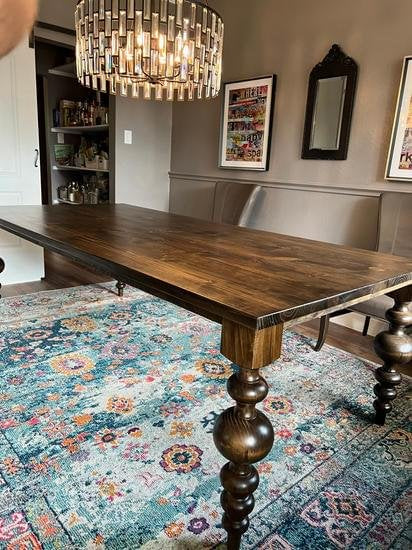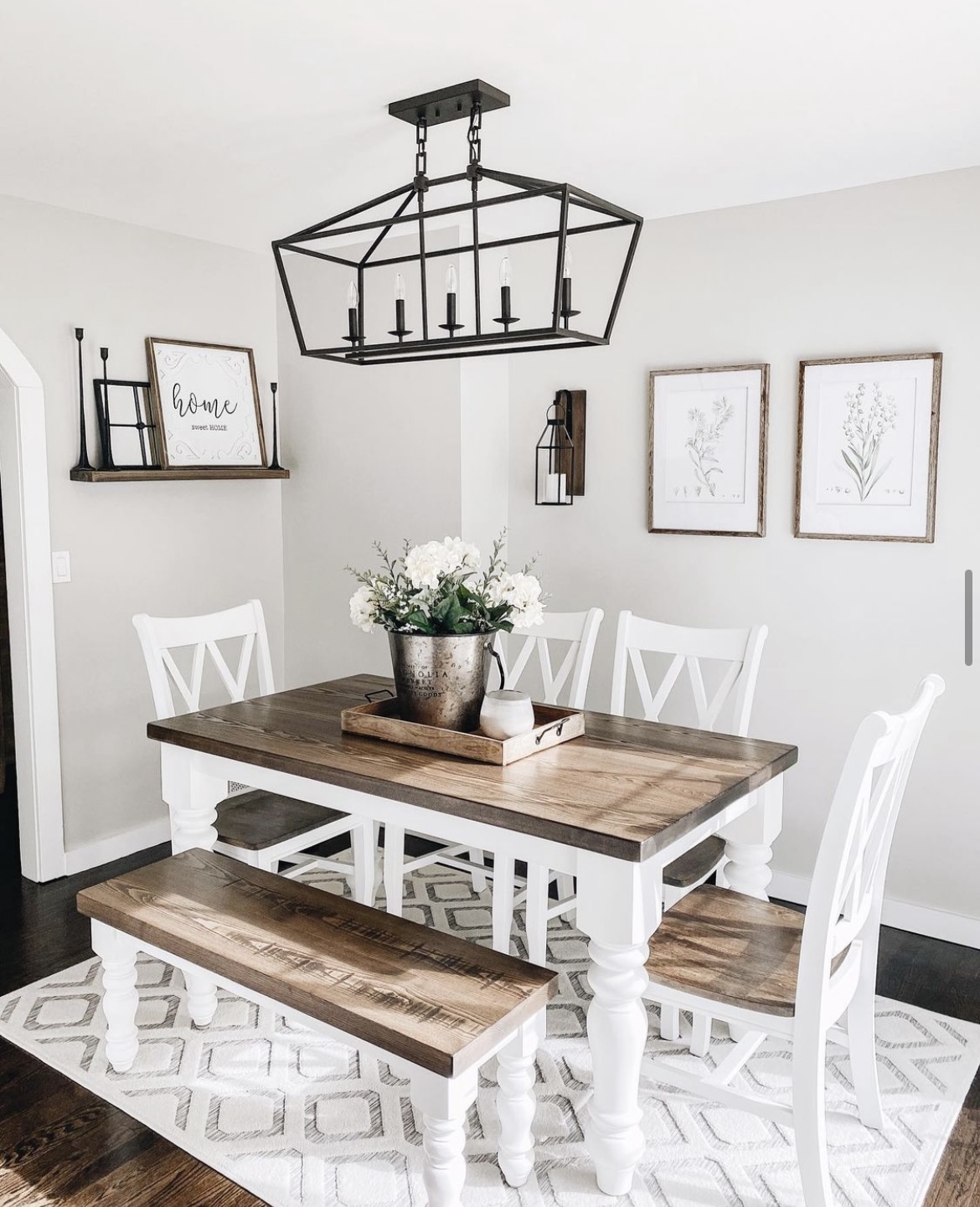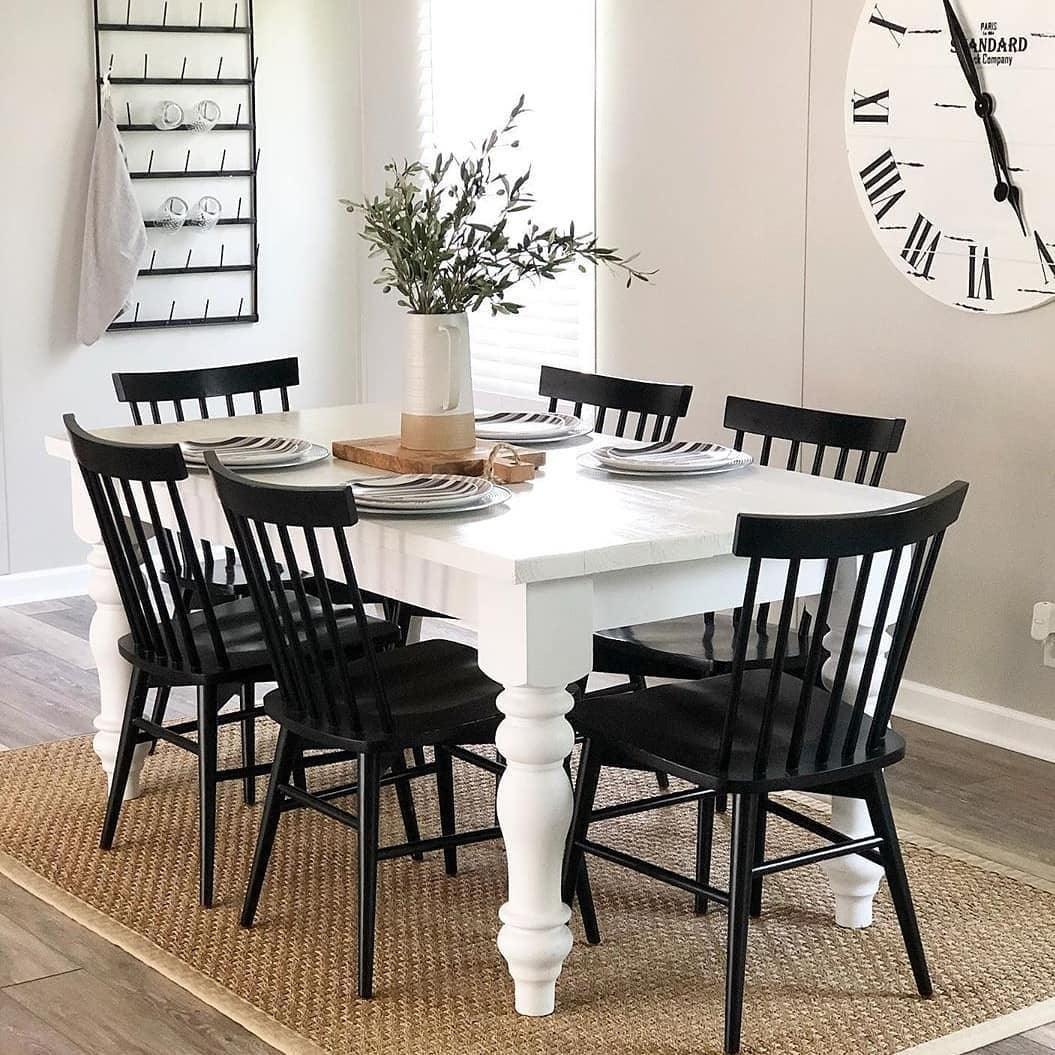Dining Room Table Legs: A Guide to Selecting the Right Style for Your Home
Dining Room Table Legs: A Guide to Selecting the Right Style for Your Home
Blog Article
Exactly How to Choose the Perfect Eating Space Table Legs for Your Home Decor
Choosing the ideal eating space table legs is a nuanced procedure that calls for cautious consideration of numerous components, including your space restrictions, visual preferences, and functional needs. The interplay between dimensions, styles, and products can substantially influence the setting of your dining area, making it important to approach this decision carefully.
Assess Your Dining Area
Analyzing your dining room is vital for selecting the right table legs that enhance both aesthetic appeals and capability. Begin by measuring the dimensions of your dining location, including ceiling elevation, floor space, and proximity to other furnishings. This info will assist identify the ideal size and elevation of your table, which straight affects the selection of table legs.
Next, take into consideration the style and design of your eating space. For example, an open-concept design may profit from table legs that supply aesthetic agility, such as slender steel or acrylic alternatives. On the other hand, an extra traditional setting may call for sturdy wooden legs that offer a feeling of permanence.
Examine the existing shade palette and products in your eating area. Harmonizing the table legs with these elements creates a natural appearance that boosts the total decor.
Ultimately, a comprehensive analysis of your dining space will lead you in making an informed decision, ensuring that your table legs not only improve the aesthetic charm however likewise offer sensible objectives.
Consider Your Style Preferences
When selecting dining-room table legs, it is important to reflect on your personal style choices, as they considerably influence the total visual of your dining space. Your selection of table legs can either enhance or contrast with existing decor, making it vital to align them with your preferred interior decoration style.
If your home leans in the direction of a modern visual, think about sleek steel or minimal wooden legs that supply a tidy, clean look. For a much more traditional technique, luxuriant wood legs with elaborate carvings can add a touch of sophistication and elegance. Industrial styles benefit from durable, resources such as redeemed wood and metal mixes, showing a sturdy appeal.
In addition, farmhouse and rustic designs usually favor strong, chunky legs that stimulate a feeling of heat and convenience. Conversely, if your decoration is eclectic, you could choose unique shapes or a mix of materials to develop aesthetic passion.

Evaluate Product Options
The selection of material for dining space table legs plays a critical function in both durability and aesthetic charm. Typical materials include wood, metal, and composite options, each offering unique features that can affect the overall appearance and long life of your table.
Timber is a classic choice, known for its warmth and flexibility. Hardwoods like oak and walnut supply phenomenal strength and can be completed in different spots to match any type of style. Nonetheless, softwoods like want are a lot more susceptible why not try this out to scrapes and dents, making them less perfect for high-traffic areas.
Steel legs, often crafted from steel or light weight aluminum, exhibit modernity and industrial charm. They are immune and very long lasting to put on, making them suitable for families with youngsters or regular celebrations (dining room table legs). Furthermore, metal can be finished in different colors, enhancing the customization possibilities
Composite materials, such as MDF or laminate, deal price and varied layouts. While usually much less long lasting than solid wood or steel, they can still provide an elegant appearance and are often simple to maintain.
Inevitably, the material you choose must straighten with your way of life, aesthetic preferences, and the degree of use your table will experience.
Determine Elevation and Size
Picking the suitable elevation and size for your eating room table is vital for both capability and convenience. The conventional elevation for dining tables typically ranges from 28 to 30 inches, enabling enough legroom for most individuals when seated. It is essential to think about the measurements of your dining space and the kinds of chairs you plan to utilize.

Additionally, take into consideration the percentages of your eating space. A bigger table in a sizable location can develop a grand ambiance, while a smaller table works well in more intimate settings. Eventually, the ideal elevation and dimension will certainly balance with your general style and boost the eating experience for you and your visitors.
Explore Customization Possibilities

Furthermore, the design of the legs can be tailored to fit numerous visit their website styles, such as rustic, modern, or commercial. As an example, conical legs can evoke a mid-century modern feeling, while chunky, block-style legs might resonate with traditional or farmhouse style.
House owners can also check out color surfaces, from natural timber stains to repaint, enabling them to match or contrast with the table top and surrounding decor.
Additionally, leg height can be gotten used to accommodate certain seating plans or individual preferences, read more improving both convenience and performance.
Lastly, one-of-a-kind embellishments, such as makings or attractive brackets, can additionally customize the table legs, making the dining experience not just a dish but a statement piece in the home. By taking into consideration these personalization alternatives, property owners can develop a dining room table that genuinely mirrors their originality.
Conclusion
Choosing the ideal dining area table legs needs mindful consideration of various aspects, consisting of the measurements of the dining space, design choices, product resilience, and preferred height. Personalization choices further enhance the capability to accomplish a natural aesthetic that enhances the general decor. By systematically assessing these aspects, house owners can make sure that the picked table legs not just fulfill functional demands yet additionally add favorably to the dining experience and ambiance of the home.
Selecting the suitable eating room table legs is a nuanced process that needs mindful factor to consider of numerous components, including your room restraints, visual choices, and functional demands.Examining your dining area is important for selecting the right table legs that enhance both aesthetics and functionality.When identifying dimension, gauge the area where the table will certainly be positioned to guarantee it fits pleasantly, permitting for at least 36 inches of clearance around the table for very easy activity. A bigger table in a roomy location can produce a grand ambiance, while a smaller table functions well in more intimate settings.Picking the suitable dining room table legs calls for cautious consideration of various variables, consisting of the dimensions of the eating space, design choices, material resilience, and wanted elevation.
Report this page